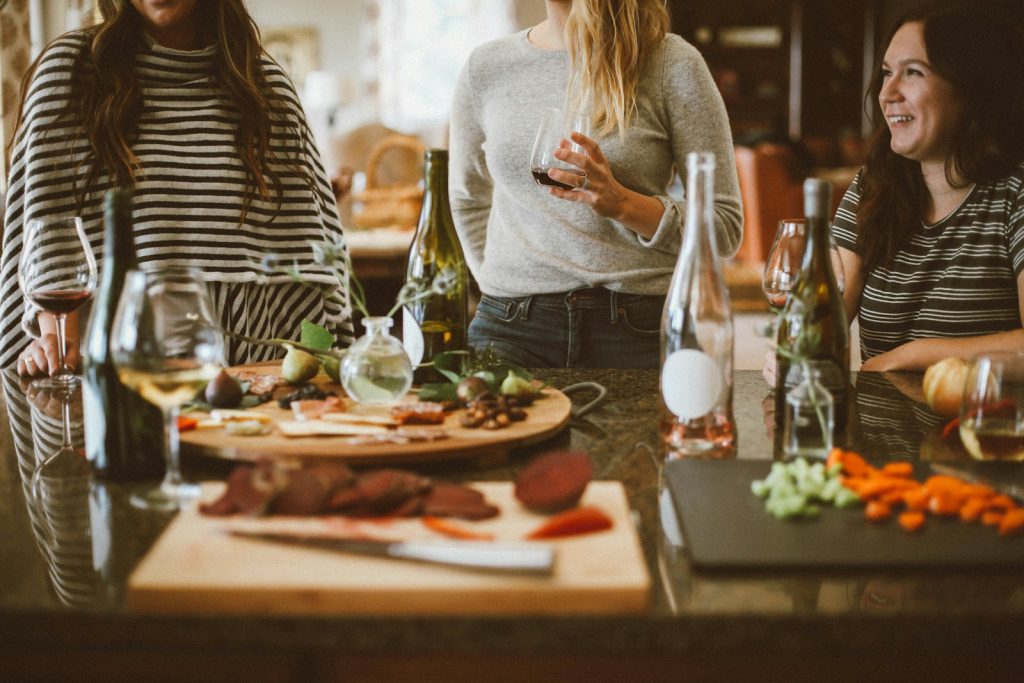Mastering the Art of Food Presentation for luxury Party Catering is just as crucial as the taste. The importance of food presentation cannot be overstated, as it sets the tone for the event and elevates the overall dining experience. Catering presentation not only captures guests’ attention but also communicates the quality and care invested in the meal. An artful presentation not only makes food more appealing but also enhances the perception of its taste and quality. Here’s a comprehensive guide on mastering the art of food presentation for party catering, with eight detailed sections, including tips, techniques, examples, and practical applications.
Understanding the Basics of Food Presentation
Professional Food presentation is a multifaceted art that goes beyond merely placing food on a plate. It involves a thoughtful process of arranging food to create visual appeal and enhance the dining experience. The foundation of excellent food presentation for any catering for parties and holidays and private dining lies in understanding and applying key concepts such as color, contrast, texture, and balance.
Color and contrast are essential elements that can make or break the visual appeal of a dish. By using contrasting colors, caterers can make their dishes more vibrant and eye-catching. For instance, pairing bright vegetables with neutral-colored proteins can create a balanced and visually appealing plate. Additionally, understanding the color wheel and how to use complementary colors can help in creating visually harmonious dishes. Texture plays a significant role as well; combining different textures, such as crispy garnishes with smooth purees, adds depth and interest to the presentation.
Balance in food presentation refers to the harmonious distribution of elements on the plate. Overcrowding the plate can make it look cluttered and unappealing, while too much empty space can make the dish seem incomplete. Achieving the right balance involves careful consideration of the portion sizes and the placement of each component. It’s about creating a visually appealing arrangement that is both inviting and appetizing. These basics are the building blocks of food presentation, setting the stage for more advanced techniques.

Choosing the Right Plate
The choice of plate is a critical aspect of food presentation that often goes overlooked. The plate serves as the canvas for the culinary creation, and selecting the right one can significantly enhance the overall presentation. Several factors should be considered when choosing a plate, including its shape, size, and color.
Shape and size are important because they determine how the food is arranged and perceived. Round plates are versatile and classic, providing a balanced and neutral backdrop for most dishes. However, experimenting with different shapes such as square, rectangular, or even asymmetrical plates can add a modern and creative touch to the presentation. The size of the plate should also be appropriate for the portion of food being served. A plate that is too small can make the dish look overcrowded, while a plate that is too large can make the portions seem sparse.
Color plays a crucial role in enhancing the visual appeal of the dish. White plates are a popular choice because they provide a clean, neutral background that allows the colors of the food to stand out. However, don’t be afraid to experiment with colored plates to add a unique element to the presentation. For example, dark-colored plates can create a striking contrast with brightly colored foods, making them pop visually. Ultimately, the goal is to choose a plate that complements the food and enhances its overall presentation.
Creating a Focal Point
Every well-presented dish needs a focal point that draws the eye and captures the attention of the diners. The focal point is the element of the dish that stands out the most and sets the tone for the entire presentation. It could be the main ingredient, a beautifully arranged garnish, or an artful drizzle of sauce.
To create a focal point, start by identifying the key element of the dish that you want to highlight. This could be a perfectly seared piece of meat, a vibrant vegetable, or a unique garnish. Place this element in the center of the plate or slightly off-center to create a dynamic and visually interesting arrangement. The placement should be intentional and designed to draw the diner’s eye to the most important part of the dish.
Garnishes can also be used to create a focal point. Fresh herbs, edible flowers, and other decorative elements can add color and texture to the plate, making the focal point even more striking. However, it’s important to use garnishes sparingly and ensure that they complement the flavors of the dish. The goal is to enhance the presentation without overwhelming the main ingredients. By thoughtfully creating a focal point, you can make your dishes more visually appealing and memorable.
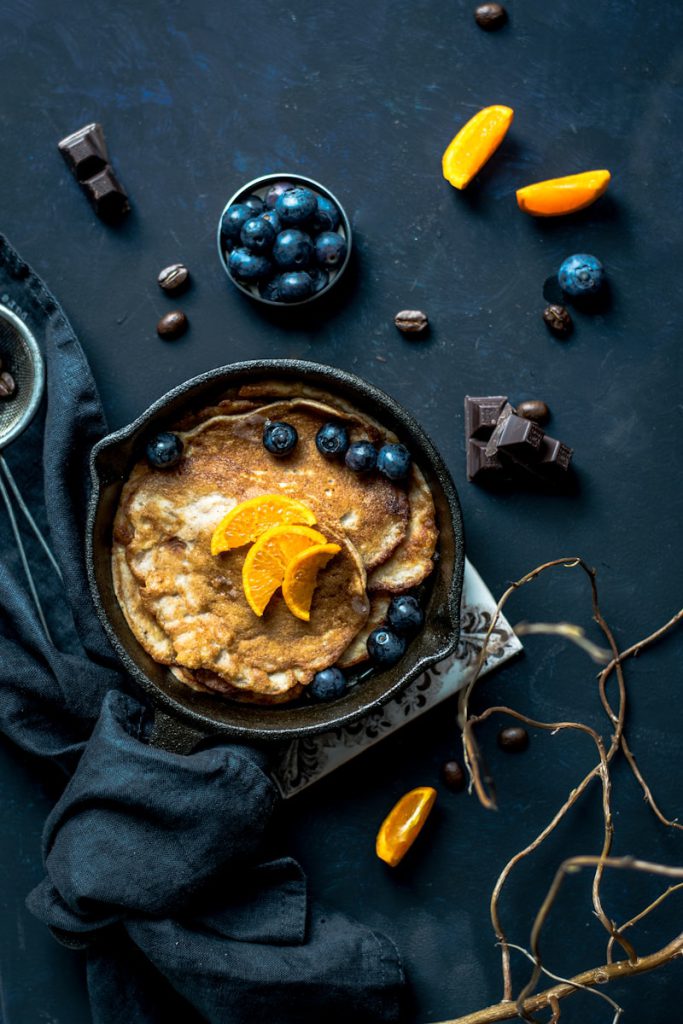
Utilizing Height and Depth
Incorporating height and depth into food presentation adds visual interest and dimension to the dish. These elements can transform a flat, one-dimensional plate into a dynamic and engaging visual experience. There are several techniques for adding height and depth to your presentations, including layering, stacking, and using vertical arrangements.
Layering involves stacking different components of the dish to create height. For example, you can place a piece of protein on a bed of vegetables or grains, creating a tiered effect. This not only adds visual interest but also allows for a more balanced distribution of flavors and textures. Another technique is to use vertical arrangements, such as skewers or tall garnishes, to add height. This can create a dramatic and eye-catching presentation that stands out.
Depth can be achieved by playing with different levels and layers on the plate. Building vertical arrangements or using garnishes to add height can create a sense of depth and dimension. Additionally, using sauces and purees creatively can add layers of flavor and visual interest. For example, you can drizzle a sauce around the edge of the plate or use it as a base for other components. By incorporating height and depth, you can create visually stunning dishes that leave a lasting impression.
Symmetry and Asymmetry in Plating
The principles of symmetry and asymmetry can be used to create visually pleasing and balanced dishes. Symmetrical arrangements involve placing identical elements in a mirror-like fashion, creating a clean and balanced look. This technique is often used in formal dining settings where precision and elegance are important.
To achieve symmetry, start by dividing the plate into equal sections and placing identical components on each side. For example, if you are serving a protein with two sides, you can place the protein in the center and arrange the sides symmetrically on either side. This creates a sense of order and balance that is visually appealing. Symmetrical plating is particularly effective for dishes with simple, clean lines and minimal garnishes.
Asymmetrical designs, on the other hand, involve placing elements off-center or using uneven numbers of components to create a more dynamic and interesting presentation. This technique is often used in contemporary and creative dining settings where innovation and artistic expression are encouraged. To achieve asymmetry, start by placing the focal point of the dish slightly off-center and arranging the other components around it in an uneven but balanced manner. This creates a sense of movement and flow that draws the eye and engages the diner. By using both symmetrical and asymmetrical techniques, you can create a variety of visually appealing presentations that suit different styles and settings.
Minimalism and Negative Space
Minimalism and the use of negative space are powerful techniques in food presentation that emphasize simplicity and elegance. The principle of minimalism involves using fewer elements on the plate, allowing each component to shine without being overshadowed. Negative space, or the empty areas around the food, enhances the visual appeal by creating a clean and uncluttered look.
In minimalistic plating, less is often more. The goal is to highlight the natural beauty and flavors of the ingredients by keeping the presentation simple and focused. Start by selecting a few high-quality components and arranging them thoughtfully on the plate. Avoid overcrowding the plate and use negative space strategically to draw attention to the key elements. This approach creates a sense of balance and sophistication that is both visually appealing and appetizing.
Negative space can also be used to create a sense of movement and flow on the plate. By leaving ample space around the food, you allow the diner’s eye to focus on each component and appreciate its individual beauty. This technique is particularly effective for highlighting delicate and intricate elements, such as garnishes and sauces. The clean and uncluttered look of minimalistic plating is not only visually pleasing but also enhances the overall dining experience by allowing the flavors and textures to take center stage.
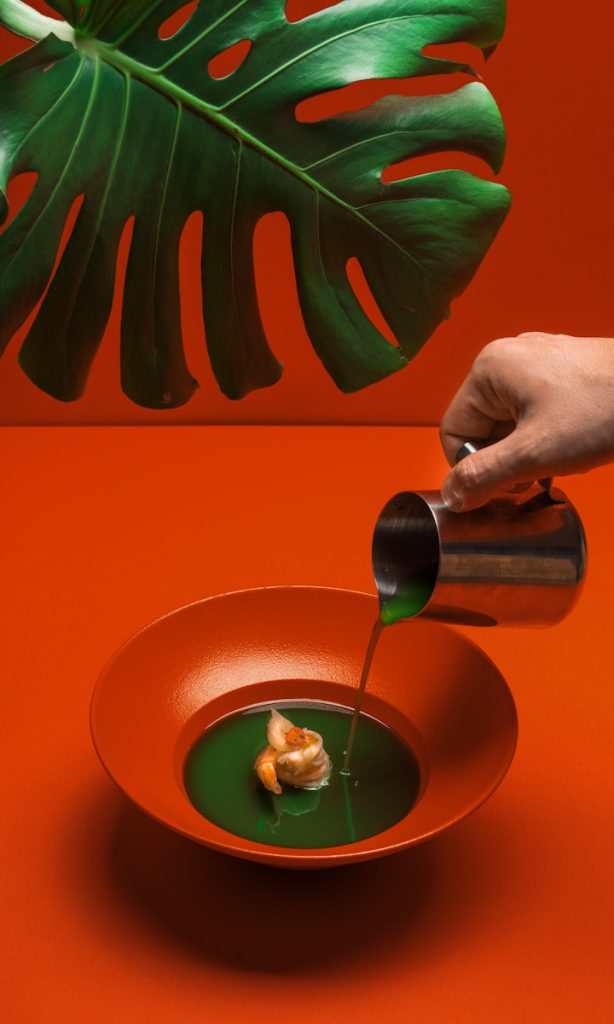
Creative Use of Sauces
Sauces play a crucial role in both the flavor and presentation of a dish. Creative use of sauces can add color, texture, and visual interest to the plate, transforming a simple dish into a work of art. There are several techniques for incorporating sauces into food presentation, including drizzling, dotting, and using sauces as a base.
Drizzling sauces around the edge of the plate or over the food can create beautiful patterns and designs that enhance the visual appeal. Use a squeeze bottle or a spoon to control the flow of the sauce and create precise lines and shapes. Dotting is another technique where small drops of sauce are placed strategically on the plate, adding color and texture without overwhelming the main components. This technique is particularly effective for adding pops of color and creating a modern and artistic presentation.
Using sauces as a base involves placing the sauce on the plate first and then arranging the other components on top. This creates a cohesive and integrated look that ties all the elements together. For example, a smear of colorful puree can serve as a canvas for placing proteins and vegetables, adding depth and visual interest to the presentation. By experimenting with different techniques and flavors, you can elevate your food presentations and create dishes that are both delicious and visually stunning.
Practical Tips for Catering Events
Catering events require efficient and effective food presentation techniques that can be executed on a large scale. Practical tips for catering events include advance preparation, setting up an assembly line, and ensuring consistency in presentation.
Advance preparation is key to ensuring smooth and efficient service during catering events. Pre-cutting and pre-portioning ingredients can save time and allow for quick assembly during the event. Setting up an assembly line with designated stations for each component of the dish can also streamline the process and ensure consistency in presentation. Each station can be responsible for a specific task, such as plating the protein, adding garnishes, or drizzling sauces.
The Role of First Impressions
First impressions are everything in party catering. The moment guests lay eyes on the food, they form an opinion about the event’s quality and the host’s attention to detail. A well-presented dish signals that the caterer has taken the necessary time and effort to create an exceptional experience. Conversely, a poorly presented dish can diminish the perceived quality, no matter how delicious it might be.
Setting the Tone
The presentation sets the tone for the event. When guests arrive and see a beautifully arranged buffet or intricately plated appetizers, they immediately feel a sense of anticipation and excitement. This positive first impression can significantly enhance their overall experience.
Quality Perception
Visual appeal directly influences the perception of food quality. A dish that looks appealing is more likely to be perceived as fresh and high-quality. This is particularly important in catering, where the visual impact can be a deciding factor for guests choosing between different dishes.
Example Table: Impact of Visual Presentation on Perceived Quality
| Presentation Quality | Perceived Freshness | Guest Satisfaction |
|---|---|---|
| High | Very Fresh | Very Satisfied |
| Medium | Fresh | Satisfied |
| Low | Not Fresh | Unsatisfied |

Visual Appeal and Guest Experience
The visual appeal of food plays a significant role in enhancing the guest experience. A well-presented dish not only looks good but also stimulates the appetite and creates a more enjoyable dining experience.
Psychological Impact
The visual presentation of food can stimulate appetite and enhance the dining experience. Bright colors, varied textures, and artistic plating techniques can make a dish more appealing, encouraging guests to savor each bite. This psychological effect is backed by research showing that visually appealing food can enhance the perception of taste.
Enhancing Enjoyment
Guests are more likely to enjoy their meal when it is visually appealing. This enjoyment translates into positive feedback, increased satisfaction, and a memorable experience. When food looks as good as it tastes, it creates a holistic dining experience that delights all the senses.
Example List: Tips for Enhancing Visual Appeal
- Use a variety of colors
- Incorporate different textures
- Employ artistic plating techniques
- Use garnishes strategically
Creative Plating Techniques
Creative plating techniques can transform a simple dish into a visual masterpiece. By paying attention to color, height, texture, and balance, caterers can create stunning presentations that captivate guests.
Color and Contrast
Using a variety of colors in plating can make dishes more visually appealing. Contrasting colors can highlight different elements of the dish, making them stand out. For example, placing a bright green garnish on a rich red sauce can create a striking visual contrast.
Height and Texture
Adding height to a dish can make it look more dynamic and interesting. This can be achieved by stacking ingredients or using tools to create vertical elements. Combining different textures, such as crunchy and creamy, can also add visual and sensory appeal.
Example List: Plating Techniques
- Stacking ingredients
- Using tools to create vertical elements
- Combining different textures
- Balancing colors on the plate
Plating Styles
Different plating styles can convey various themes and moods. Minimalist plating focuses on simplicity and elegance, while rustic plating can evoke a sense of comfort and homeliness. Choosing the right style depends on the event’s theme and the desired atmosphere.
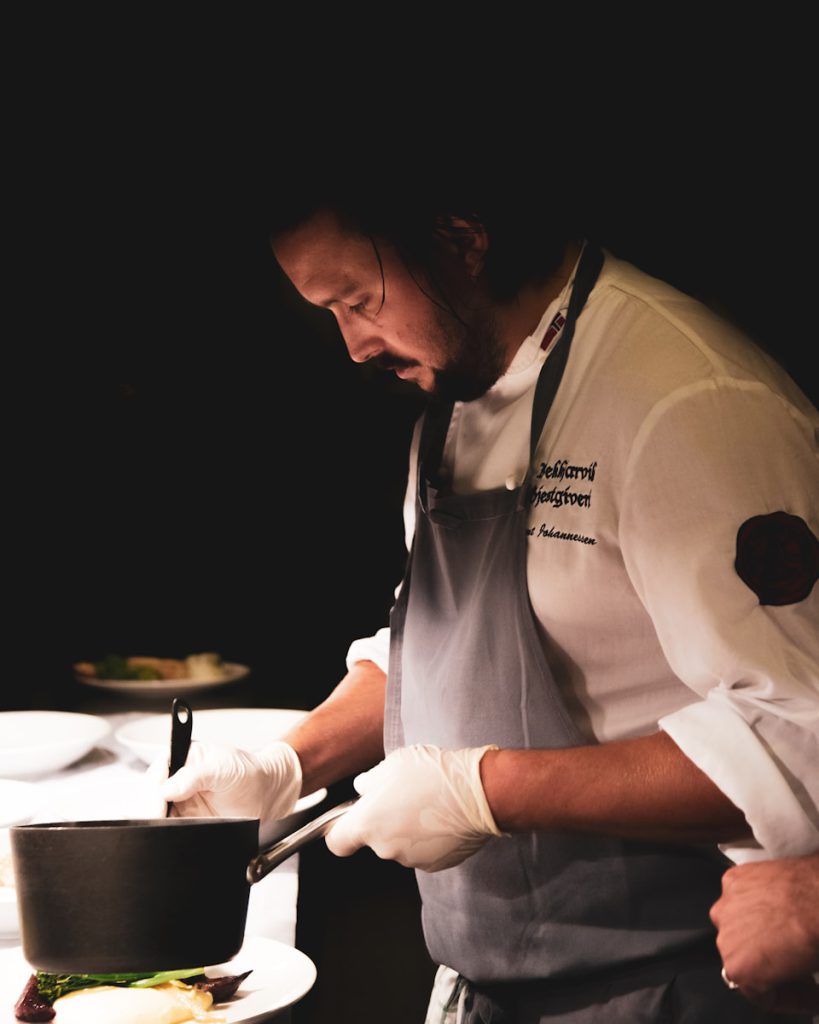
Importance of Garnishes
Garnishes are more than just decorative elements; they enhance the flavor, texture, and visual appeal of dishes. A well-chosen garnish can elevate a dish from ordinary to extraordinary.
Flavor and Appearance
Garnishes can add a pop of color, a hint of flavor, or a contrasting texture to a dish. For example, a sprinkle of fresh herbs can add color and freshness, while a drizzle of balsamic glaze can enhance both the flavor and appearance of a dish.
Popular Garnishes
Common garnishes include fresh herbs, citrus zest, edible flowers, and microgreens. These elements can be used to complement the dish’s flavors and add visual interest.
Example List: Popular Garnishes
- Fresh herbs (e.g., basil, cilantro)
- Citrus zest (e.g., lemon, lime)
- Edible flowers (e.g., pansies, nasturtiums)
- Microgreens (e.g., arugula, beet greens)
Thematic and Seasonal Presentations
Aligning food presentation with the event’s theme and season can create a more cohesive and immersive experience for guests.
Event Themes
Themed presentations can enhance the overall atmosphere of the event. For example, a beach-themed party might feature seafood dishes served in seashells, while a winter holiday event could include dishes adorned with seasonal decorations like pinecones and cranberries.
Seasonal Elements
Incorporating seasonal ingredients and decorations can add freshness and relevance to the presentation. Seasonal elements not only enhance the visual appeal but also reflect the time of year, making the event feel more timely and appropriate.
Example Table: Seasonal Presentation Ideas
| Season | Ingredients | Decorations |
|---|---|---|
| Spring | Asparagus, strawberries | Fresh flowers, pastel colors |
| Summer | Tomatoes, basil | Seashells, bright colors |
| Autumn | Squash, apples | Pumpkins, fall leaves |
| Winter | Root vegetables, citrus | Pinecones, winter greens |
Social Media and Shareability
In the age of social media, the visual appeal of food has taken on new importance. Instagram-worthy dishes can help promote events and attract attention online.
Instagram-Worthy Dishes
Dishes that are visually stunning and unique are more likely to be shared on social media. Encouraging guests to take and share photos can increase the event’s reach and visibility.
Increasing Reach
Beautiful food presentations can generate buzz and engagement on social media, leading to increased visibility and potential new clients. Hashtags, geotags, and encouraging user-generated content can amplify the event’s online presence.
Sustainability in Food Presentation
Sustainable practices in food presentation are becoming increasingly important. Using eco-friendly materials and minimizing waste can reflect positively on the caterer and the event.
Eco-Friendly Materials
Using biodegradable or reusable materials for serving and presenting food can reduce the event’s environmental impact. This includes using bamboo plates, edible containers, and natural garnishes.
Waste Reduction
Planning portion sizes and presentation methods to minimize food waste is crucial. Techniques like using the whole vegetable or fruit, incorporating leftovers creatively, and avoiding single-use plastics can contribute to a more sustainable event.
Example List: Sustainable Practices
- Using biodegradable serving ware
- Planning portion sizes to reduce waste
- Incorporating leftovers creatively
- Avoiding single-use plastics

Advanced Plating Techniques
Advanced plating techniques can take food presentation to the next level, incorporating elements of molecular gastronomy and unconventional tools.
Unconventional Tools
Using tools like syringes for precise sauce application, paintbrushes for artistic glazes, and unique serving boards can create stunning visual effects.
Molecular Gastronomy
Techniques like spherification, foams, and gels can add a modern and artistic touch to dishes. These elements not only look impressive but also enhance the dining experience by adding new textures and flavors.
Example List: Advanced Plating Tools and Techniques
- Syringes for sauce application
- Paintbrushes for glazes
- Spherification techniques
- Creating foams and gels
Interactive and Live Stations
Interactive and live stations can add excitement and engagement to events, allowing guests to interact with chefs and customize their dishes.
Live Cooking Stations
Live cooking stations, where chefs prepare food in front of guests, can create a dynamic and entertaining atmosphere. This interaction adds a personal touch and allows guests to see the care and skill involved in food preparation.
DIY Food Stations
DIY food stations, such as salad bars, taco stations, and dessert decorating corners, engage guests by allowing them to customize their dishes. This interactive element can make the dining experience more enjoyable and memorable.
Example List: Interactive Food Stations
- Salad bars
- Taco stations
- Dessert decorating corners
- Sushi rolling stations
Customizing for Dietary Needs
Catering to various dietary needs while maintaining visual appeal is essential for inclusive and enjoyable dining experiences.
Diet-Specific Presentations
Presenting food that meets dietary restrictions, such as gluten-free, vegan, or allergen-free dishes, in an appealing way ensures all guests feel included and satisfied.
Visual Appeal
Using vibrant colors, interesting textures, and creative plating techniques can make diet-specific dishes look just as appetizing as traditional options.
Example List: Diet-Specific Presentation Tips
- Use vibrant colors
- Incorporate interesting textures
- Employ creative plating techniques
- Highlight fresh and natural ingredients
Consistency is crucial in catering events to ensure that each guest receives a dish that is visually appealing and identical in presentation. Implementing standardized plating techniques and clear instructions for the catering team can help maintain consistency. For example, using templates or guides for portion sizes and placement can ensure that each plate looks the same. Additionally, conducting a practice run before the event can help identify potential issues and allow for adjustments to be made.
Efficiency is another important aspect of catering events. Setting up an assembly line with designated stations for each component of the dish can streamline the process and ensure that the food is plated quickly and consistently. Each station can be responsible for a specific task, such as plating the protein, adding garnishes, or drizzling sauces. This not only speeds up the plating process but also allows for better coordination and communication among the team members.
Another practical tip for catering events is to use versatile and easy-to-handle equipment. For example, using stackable serving trays can help save space and make it easier to transport and serve food. Additionally, choosing dishes and serving ware that are durable and easy to clean can help reduce the time and effort required for setup and cleanup. By focusing on efficiency and consistency, you can ensure that your catering events run smoothly and that the food presentation meets the highest standards.
Incorporating Seasonal and Local Ingredients
Using seasonal and local ingredients is a great way to enhance the freshness and flavor of your dishes while also supporting local producers and reducing your environmental impact. Incorporating seasonal and local ingredients into your food presentation can also add a unique and authentic touch to your dishes, making them more appealing to guests.
Seasonal ingredients are typically at their peak in terms of flavor and quality, making them ideal for creating fresh and vibrant dishes. For example, using fresh berries in the summer or root vegetables in the winter can add a seasonal twist to your presentations. Additionally, using local ingredients can help support local farmers and producers, reduce transportation costs, and promote sustainability.
Incorporating seasonal and local ingredients into your food presentation can also help create a connection between the food and the place where it is being served. For example, using locally sourced seafood for a coastal event or farm-fresh vegetables for a country-themed event can add an authentic and regional touch to the dishes. By focusing on seasonal and local ingredients, you can create fresh, flavorful, and visually appealing dishes that resonate with your guests.
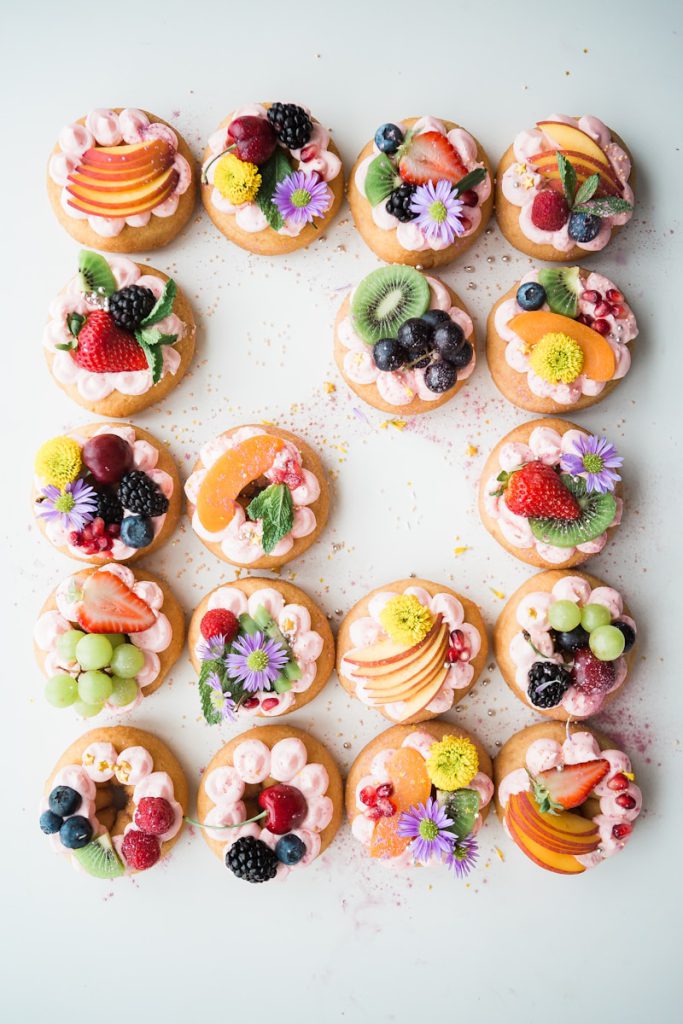
Incorporating Trends and Innovations
Staying up-to-date with the latest trends and innovations in food presentation can help keep your dishes modern, exciting, and relevant. Incorporating current trends and innovative techniques into your food presentation can also help differentiate your catering services and attract more clients.
One popular trend in food presentation is the use of edible flowers and microgreens. These delicate and colorful garnishes can add a fresh and vibrant touch to any dish, making it more visually appealing. Edible flowers such as pansies, nasturtiums, and violets can add a pop of color, while microgreens like pea shoots and radish sprouts can add texture and flavor.
Another trend is the use of unique and creative plating techniques, such as deconstructed dishes and geometric arrangements. Deconstructed dishes involve presenting the components of a dish separately, allowing guests to see and appreciate each element individually. Geometric arrangements involve using precise cuts and placements to create visually striking patterns and shapes on the plate. These techniques can add a modern and artistic touch to your presentations, making them stand out.
Incorporating innovations such as molecular gastronomy techniques can also add an element of surprise and excitement to your presentations. Techniques such as spherification, foams, and liquid nitrogen can create unique textures and presentations that are sure to impress guests. By staying current with trends and innovations, you can keep your food presentations fresh, exciting, and memorable.
Conclusion
Incorporating seasonal and local ingredients can enhance the freshness and authenticity of your dishes, while staying up-to-date with trends and innovations can keep your presentations modern and exciting. With these tips and techniques, you can create stunning food presentations that leave a lasting impression on your guests and set your catering services apart from the competition.
The importance of food presentation in party catering cannot be overstated. It sets the tone for the event, enhances the guest experience, and can leave a lasting impression. By employing creative plating techniques, using garnishes strategically, aligning presentations with themes and seasons, and incorporating advanced techniques, caterers can elevate their offerings and create memorable dining experiences. Sustainable practices and catering to dietary needs further enhance the appeal and inclusivity of the event. In the age of social media, visually stunning dishes can also help promote events and attract attention online, making food presentation a vital aspect of successful catering.



